The Giants have been labelled the "Super Shot Queens" since the introduction of the Super Shot rule in 2020 into Super Netball. Every season, they have led the league in Super Shot attempts and Super Shot makes, and it has propelled them into finals repeatedly.
It's a tactic that has become associated with the Giants. Dan Ryan, West Coast Fever coach, illustrated this when he labelled the Giants the "super shot queens" after their matchup in Round Two.
In 2022, the Giants led the league in Super Shot accuracy, with 57 per cent of attempts successful. Jo Harten led the way with 64 made super shots herself.
The only downside to that, and the problem that has compounded massively in 2023 is that the Giants were the worst team at converting missed shots to goal, managing to convert just 15.4 per cent of misses to a goal (league average was almost 30 per cent).
The Super Shot
If you are making more Super Shots than you miss, it's a winning tactic. It's better than going for the one-point goal, because scoring two goals half of the time is better than scoring one goal most of the time. Simple maths.
The problem is, when you're not, then you're in trouble. Or, if other teams are capitalising on your misses more.
Because the stats actually lie a little bit. The Giants are currently better at the Super Shot in 2023 than in 2022, despite going backwards as a team.
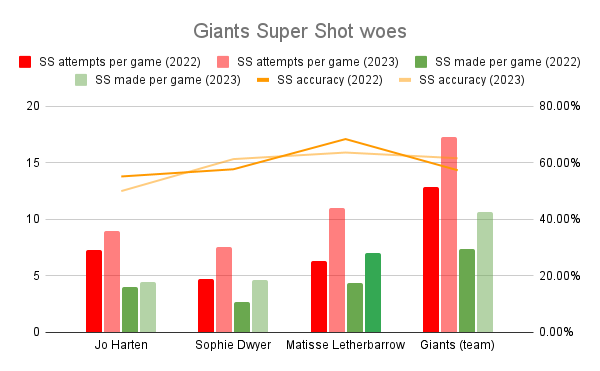
Faded colours represent 2023 numbers, for the Giants Super Shot statistics. Full colours represent 2022 numbers.
The Giants are taking more Super Shots in 2023 than in 2022. They're making more Super Shots in 2023 than in 2022, and they're typically doing it in 2023 at a better accuracy than they were in 2022.
The Recovery
And yet, the Giants are 0-3, and it feels like the Super Shot is their problem. And it's not to say that the numbers aren't right, but that there is more to it than just the shooting numbers.
Goals/Attempts in the last five mins:
— Michael Hutchinson (@xLurch) April 2, 2023
Vixens 5/5 (5/5, SS 0/0)
Giants 0/3 (0/1, SS 0/2)
Score: Vixens 5, Giants 0#VIXvGIA • #SSN2023 https://t.co/mn3A4LdEWb
The first sign of the problem - the statistic about recovering from missed shots. So far this season, the Giants have managed to take the next shot on five occasions after missing a Super Shot (four rebounds, one turnover down the court). Five times in three matches. This is reflected in the numbers from this season as well.

Last year, the Giants were averaging 2.4 rebounds per game, this season, it is just 1.3. The Giants have just four rebounds so far this year, on 33 misses. And they've missed two of the shots that came from those four rebounds.
In 2023, the Giants are converting just six per cent of missed shots to goals, down from 15.4 per cent last year.
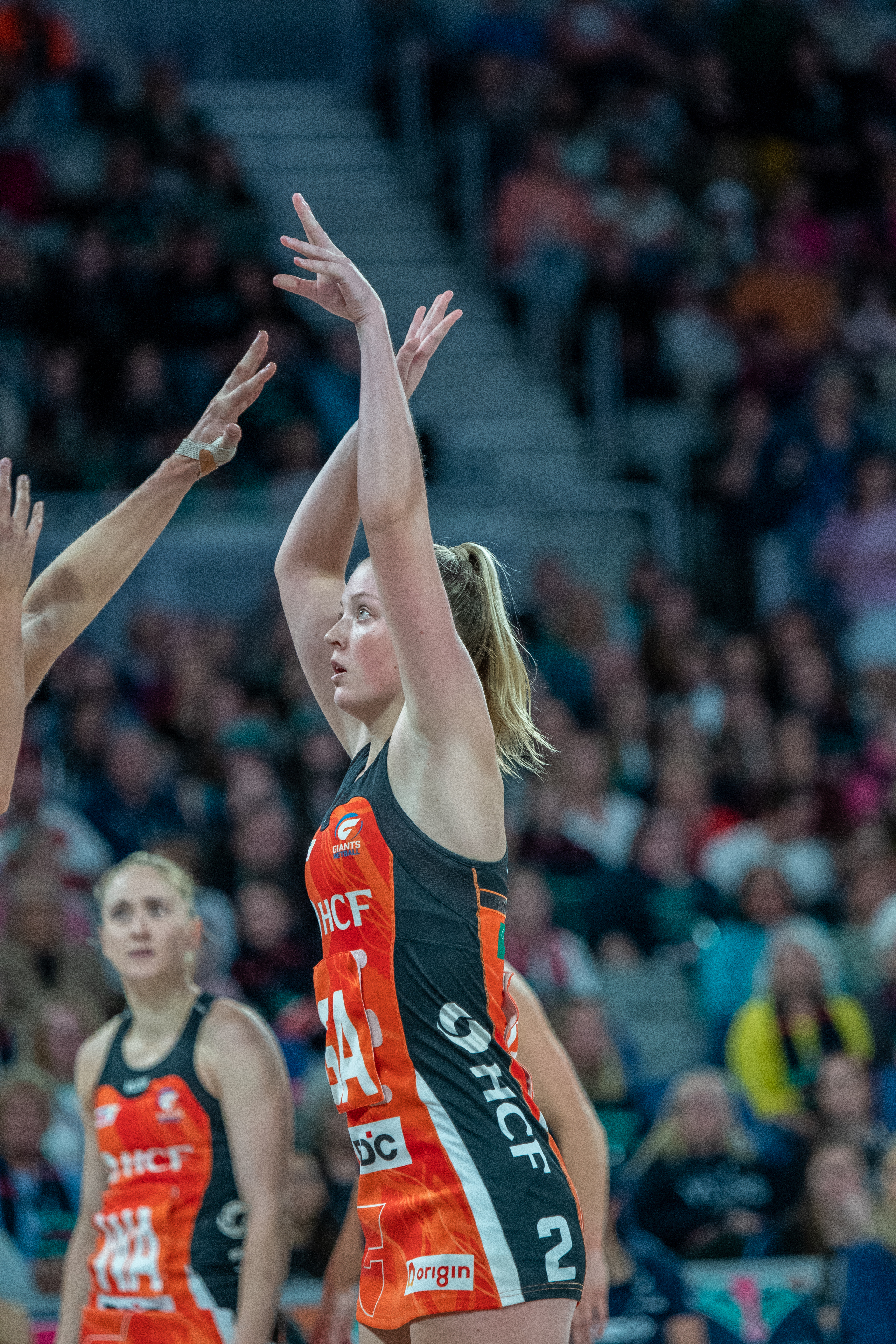
Sophie Dwyer has been a Super Shot exponent since she came into the league. Image: Nigel Barrie
When asked ahead of Round Three, Sophie Dwyer was focused on improving the shooting percentage.
"In that first game [against the Lightning], obviously, we were down by quite a lot for [the] majority of the game, so we were having to take a lot of risks," Dwyer said.
"We probably didn't work the ball smartly to post because we were just trying to get a shot up because we had to, you know, turn over the next ball, and I think, probably wasn't exactly how we wanted to play.
"And I guess the shooting percentage shows that and then I guess, against the Fever, a similar position that we were down, but I think our one-point shooting was a lot higher in that game. And, you know, we do want to try and work it to post as much as we can open up Jo or 'Tisse [Letherbarrow] on a hold."
The Giants again shot around 80 per cent accuracy in Round Three against the Vixens, but 57 per cent accuracy on Super Shots.
The Two Headed Monster
The Giants' decision to continually go for two has made them an interesting tactical study. In 2022, they were the only team with two starting players (or a goal shooter and a goal attack) in the top 10 for Super Shots made. The Lightning and the Vixens each had two-goal attacks in the top 10, but they were rarely on court together (and they were all behind both Dwyer and Harten).
This has essentially created a two-headed monster, where the Giants have the threat of either shooter taking the Super Shot. This has benefits and drawbacks, but the Giants have always lived with that.
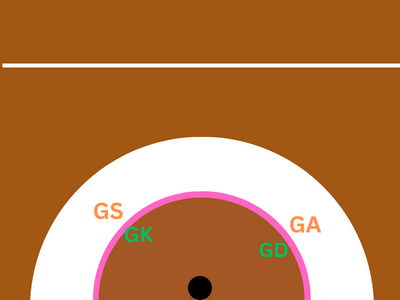
Typical map of a Giants player taking a Super Shot.
The way the Giants set up forces the second defender to be accountable for the second shooter. They can't cheat across and attempt to help block the shot.
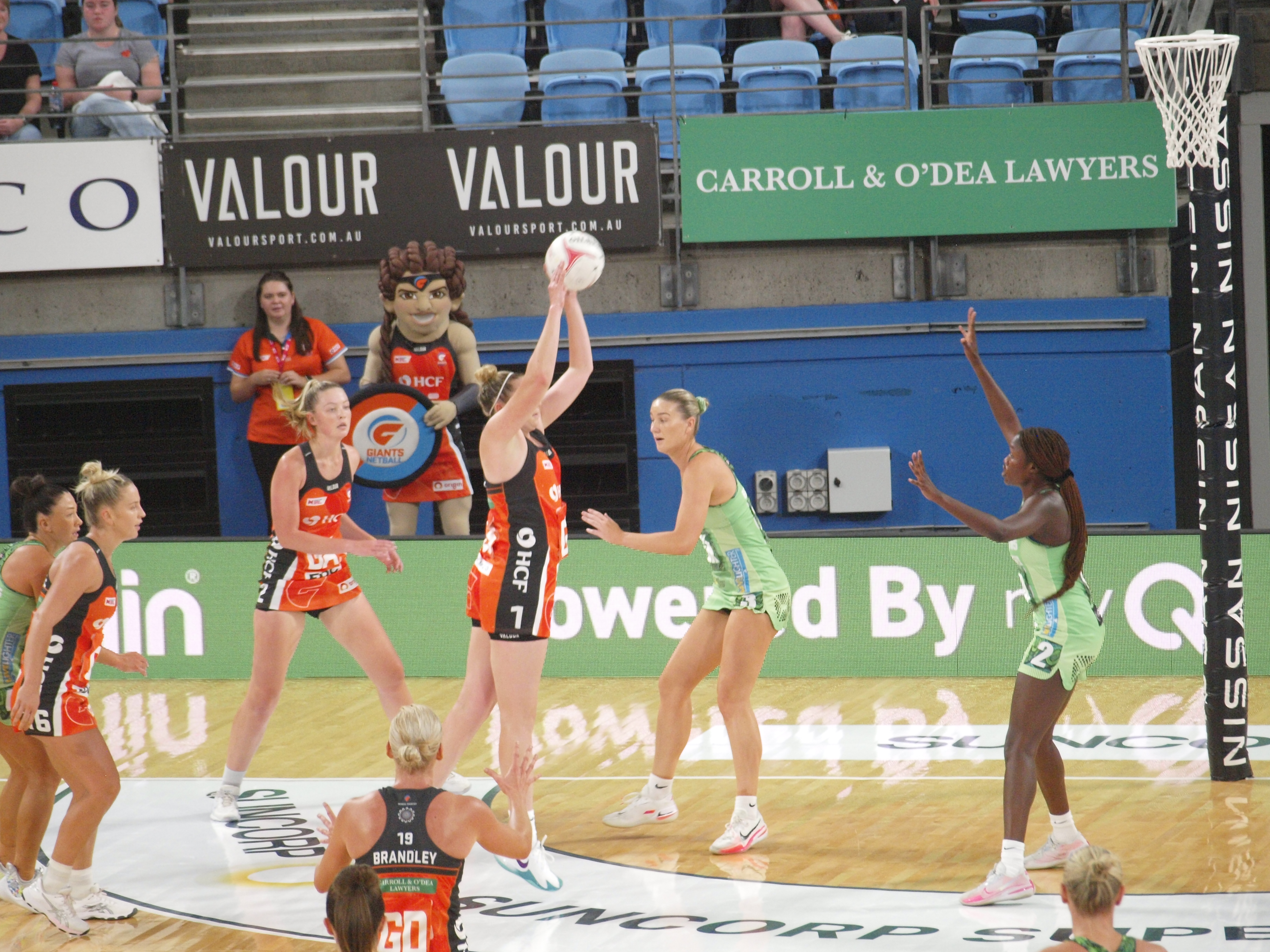
Jo Harten with ball in hand, and Sophie Dwyer in the Super Shot area, forcing Courtney Bruce and Sunday Aryang to spli. Image: Dan Coppel
When teams play against the Magpies, or the Fever, the second shooter stands under the post, and defenders choose whether to defend the shooter at the post, or cheat across and try and block the Super Shot.
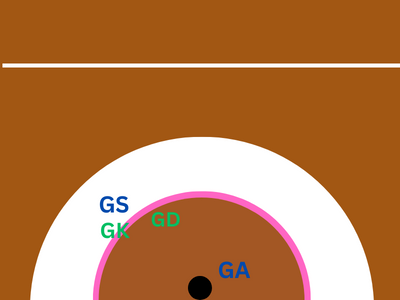
An example of a one-shooter set-up, where the defender cheats across to block the shot.
The upside to forcing the defenders to split is that it creates less "handover" pressure on the shooter, and reduces the risk of blocking.
The downside is that the second shooter typically is further away from the post than the second defender, who doesn't want to get caught behind the shooter.
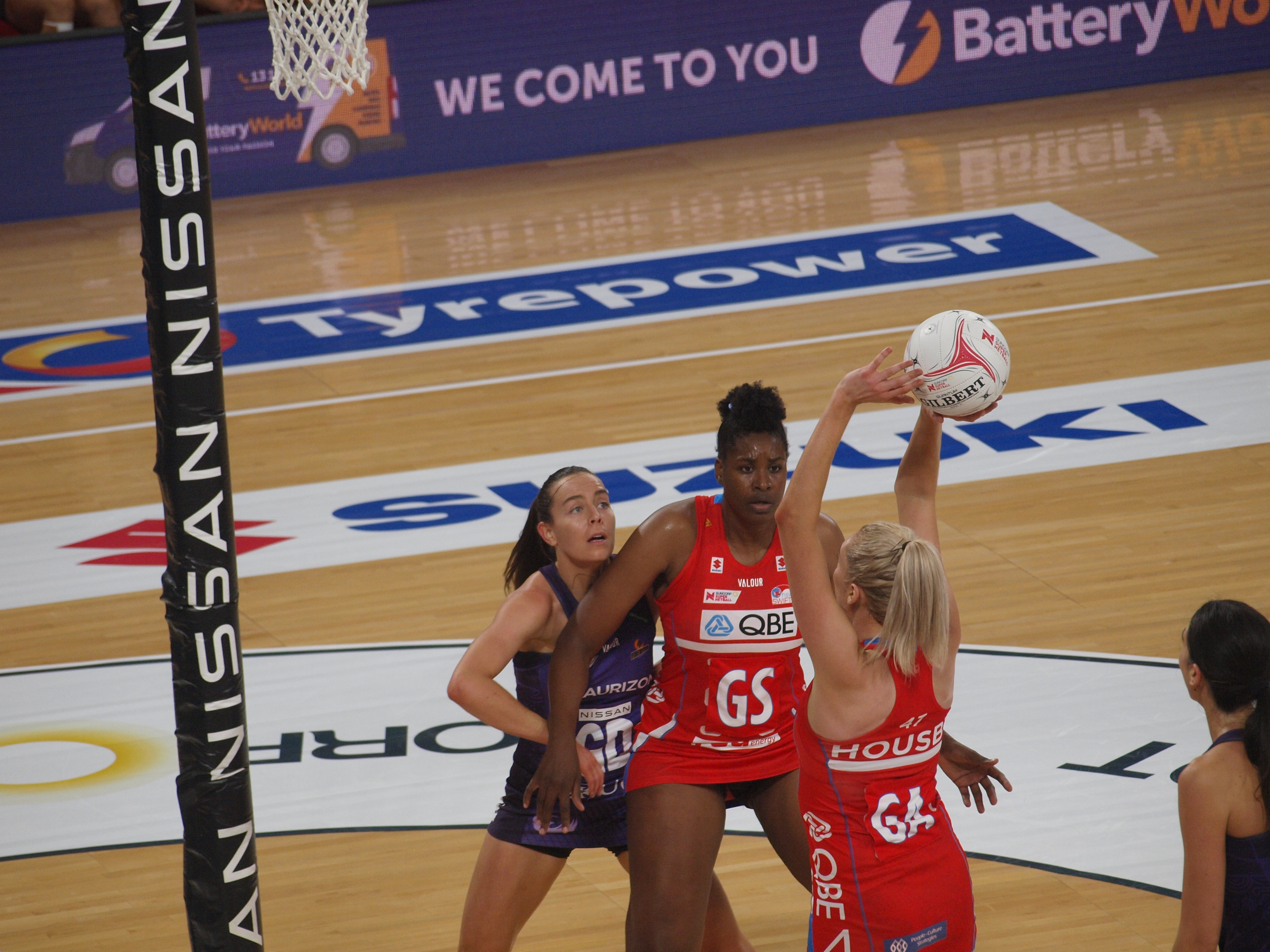
Ruby Bakewell-Doran pushes in closer to the post than Romelda Aiken-George, positioning for the rebound. Image: Dan Coppel
This gap makes it easier for defenders to rebound a missed shot.
When teams are defending the Super Shot with only one shooter, they can still choose to split the defenders. Then, the second defender typically contests for the rebound with the second shooter.
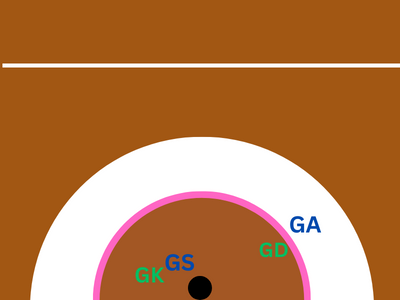
A split defence, with one shooter at the post, and one shooter taking the Super Shot.
This isn't a guaranteed win for the shooter, but it at least puts them on level pegging with the defender. The way the Giants do it, they give away that advantage.
Some teams, like the Swifts, prefer this set-up when playing with Sophie Fawns and Helen Housby. The Vixens typically take this approach too. It leaves them with a stronger chance of a rebound, but it does mean the defender relaxes slightly.
When the two shooters are both in the Super Shot range, the defenders are forced to be on the balls of their feet, hedging between the rebound, and the shooter-to-shooter pass.
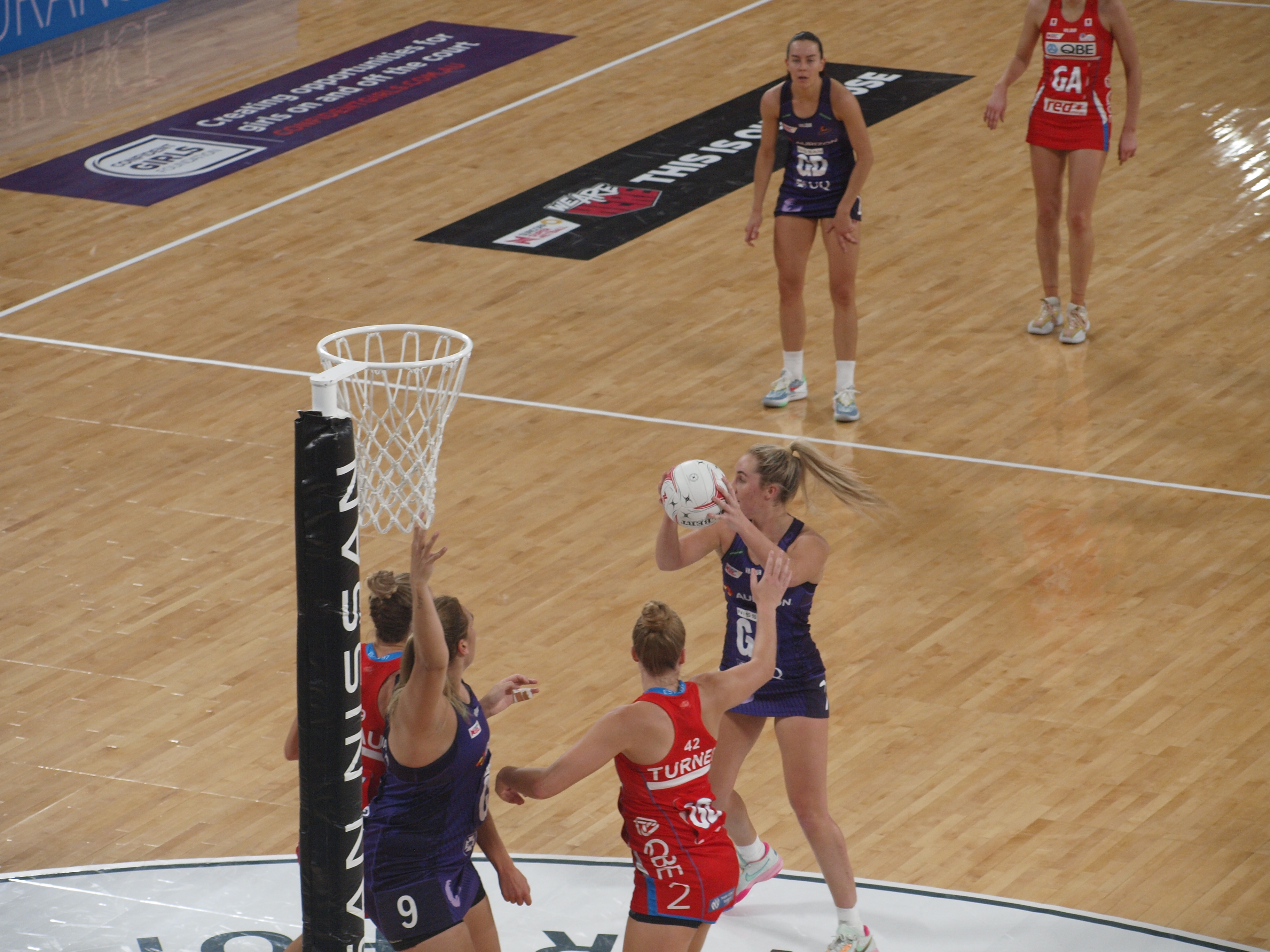
Maddy Turner and Sarah Klau hedge between contesting the rebound against Donnell Wallam and defending Mia Stower's shot. Image: Dan Coppel
It's worth noting that when a defender is out of play after being penalised, these scenarios are all out of whack, as all teams almost always send a shooter to post, and the sole defender has to hedge between defending the shot and contesting the rebound.

When a defender is out of play, as pictured, the equation is totally different, as Sophie Dwyer shoots in front of Courtney Bruce. Image: Dan Coppel
The Problem
The Giants are gambling on their accuracy at the Super Shot. They are banking that they will make more Super Shots than other teams, and that the misses will be few enough that they can live with giving up the rebound when they do miss.
And in a vacuum, that gamble is right. The Giants are making 61 per cent of their Super Shots.
The problem is, that sport is not a vacuum. The rest of the league is making 56 per cent of their Super Shots. And they are rebounding them at closer to 30 per cent, giving them more repeat shots, and allowing the 'consolation' one-point goal on the second chance more often.
When the Giants are only making slightly more of their Super Shots than the rest of the league, and rebounding a lot less, that's where one of their scoring issues comes up.
In Round One, the Super Shot tactic didn't make a difference to the outcome. The Giants were blown away by the Lightning.
In Round Two, the Giants lost by one goal, and there were eight Super Shot misses. Four were turned into goals for the Fever, including one that became a Super Shot. Two of them, the Giants rebounded, scoring one and missing one. Two the Giants turned the ball over further down the court and had the next shot on goal.
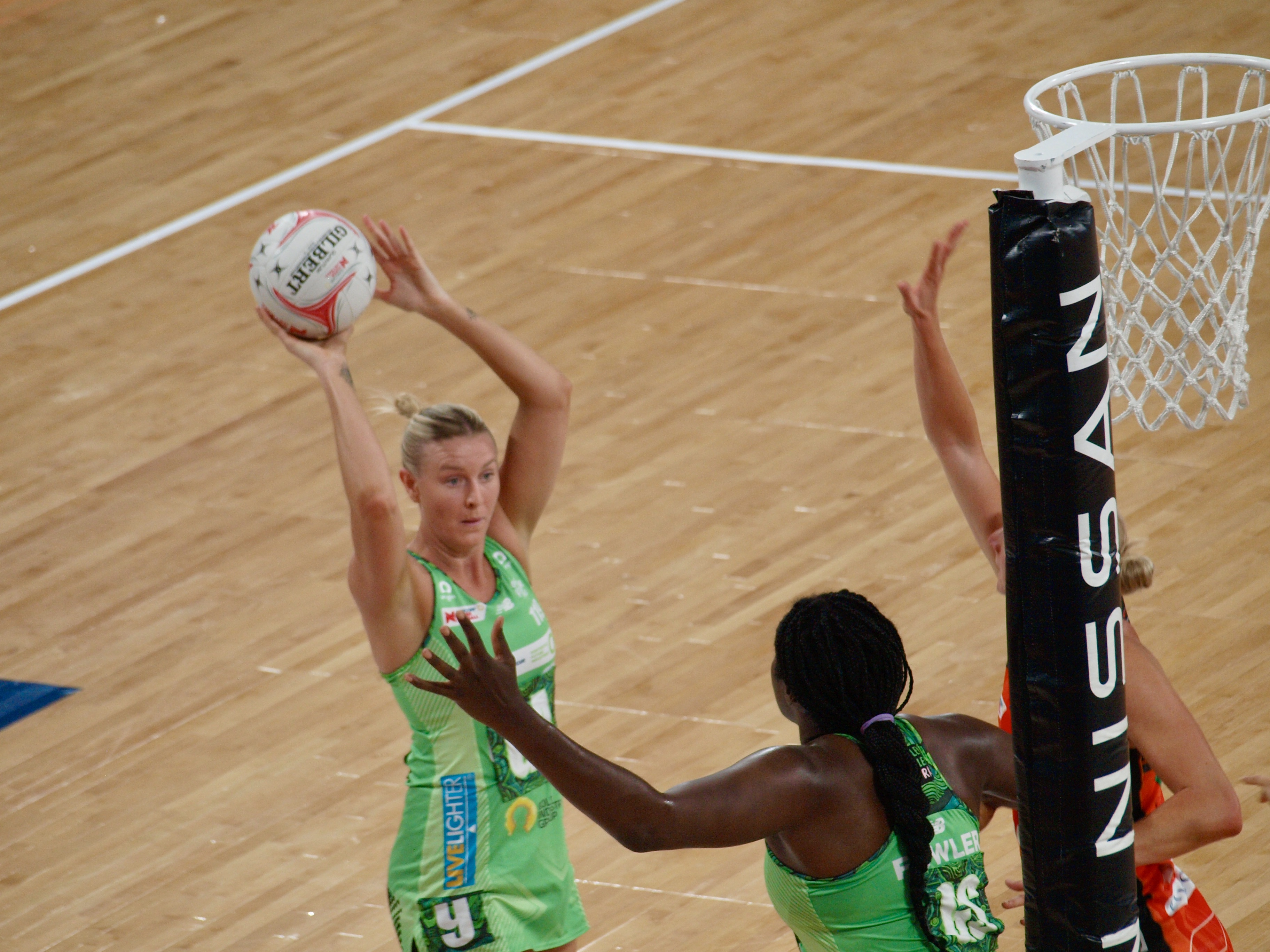
Sasha Glasgow and the Fever were lethal on Giants' turnovers in Round Two. Image: Dan Coppel
In Round Two, if the Giants rebounded at league average, they would have generated two more shots on goal (a four-goal swing). It may well have been enough to change the result.
In Round Three, the Giants missed six Super Shots, with two rebounds, and four turned over. As it happened, both those rebounds resulted in a second miss, which the Giants failed to turn over. That was a league-average result, and it was the misses that were killer, rather than the rebounds.
The Real Problem
So the numbers say that the Giants live by the Super Shot, but this year are dying by the Super Shot?
Not quite.
The Super Shot rebounding may have cost the Giants the match against the Fever, but the same could be said for Tilly McDonell's ill-fated substitution that left Jhaniele Fowler open under the post. There were a myriad of moments for the match to turn on.
In 2022, the Giants were among the league's best in generating gains and turnovers. This year, they haven't been able to turn over as much ball. They haven't been able to apply pressure as much all the way down the court.
And with a heavy reliance on Jo Harten and Maddie Hay, their absence in Round One was a killer.
So are the Giants dying by the Super Shot? Not really. The league is starting to catch up to their volume and accuracy, but the Super Shot is far from a net-negative tactic for the Giants. They just need to find a different way to win sometimes.
Before you move on, why not give our Facebook page a like here? Or give our Twitter account a follow to keep up with our work here.
